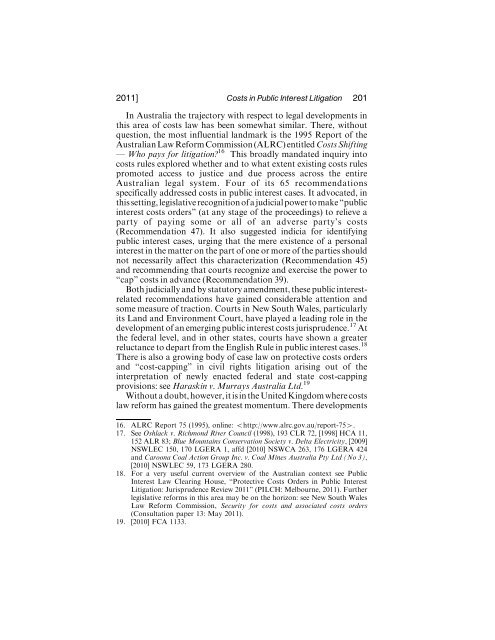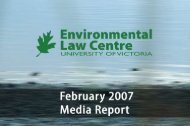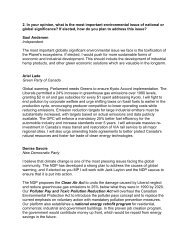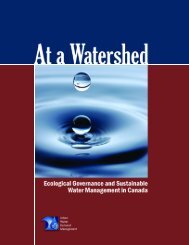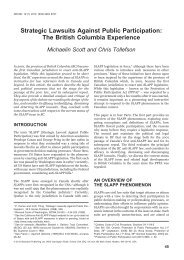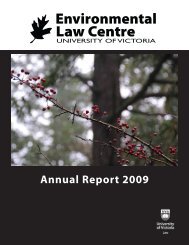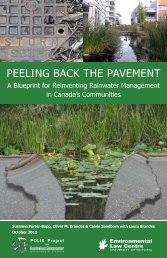COSTS IN PUBLIC INTEREST LITIGATION REVISITED ...
COSTS IN PUBLIC INTEREST LITIGATION REVISITED ...
COSTS IN PUBLIC INTEREST LITIGATION REVISITED ...
You also want an ePaper? Increase the reach of your titles
YUMPU automatically turns print PDFs into web optimized ePapers that Google loves.
2011] Costs in Public Interest Litigation 201In Australia the trajectory with respect to legal developments inthis area of costs law has been somewhat similar. There, withoutquestion, the most influential landmark is the 1995 Report of theAustralianLaw Reform Commission(ALRC) entitled Costs Shifting— Who pays for litigation? 16 This broadly mandated inquiry intocosts rules explored whether and to what extent existing costs rulespromoted access to justice and due process across the entireAustralian legal system. Four of its 65 recommendationsspecifically addressed costs in public interest cases. It advocated, inthissetting,legislativerecognitionofajudicialpowertomake“publicinterest costs orders” (at any stage of the proceedings) to relieve aparty of paying some or all of an adverse party’s costs(Recommendation 47). It also suggested indicia for identifyingpublic interest cases, urging that the mere existence of a personalinterest in the matter on the part of one or more of the parties shouldnot necessarily affect this characterization (Recommendation 45)and recommending that courts recognize and exercise the power to“cap” costs in advance (Recommendation 39).Both judicially and by statutory amendment, these public interestrelatedrecommendations have gained considerable attention andsome measure of traction. Courts in New South Wales, particularlyits Land and Environment Court, have played a leading role in thedevelopment of an emerging public interest costs jurisprudence. 17 Atthe federal level, and in other states, courts have shown a greaterreluctance to depart from the English Rule in public interest cases. 18There is also a growing body of case law on protective costs ordersand “cost-capping” in civil rights litigation arising out of theinterpretation of newly enacted federal and state cost-cappingprovisions: see Haraskin v. Murrays Australia Ltd. 19Without a doubt, however, it is in the United Kingdom where costslaw reform has gained the greatest momentum. There developments16. ALRC Report 75 (1995), online: 5http://www.alrc.gov.au/report-754.17. See Oshlack v. Richmond River Council (1998), 193 CLR 72, [1998] HCA 11,152 ALR 83; Blue Mountains Conservation Society v. Delta Electricity, [2009]NSWLEC 150, 170 LGERA 1, affd [2010] NSWCA 263, 176 LGERA 424and Caroona Coal Action Group Inc. v. Coal Mines Australia Pty Ltd (No 3),[2010] NSWLEC 59, 173 LGERA 280.18. For a very useful current overview of the Australian context see PublicInterest Law Clearing House, “Protective Costs Orders in Public InterestLitigation: Jurisprudence Review 2011” (PILCH: Melbourne, 2011). Furtherlegislative reforms in this area may be on the horizon: see New South WalesLaw Reform Commission, Security for costs and associated costs orders(Consultation paper 13: May 2011).19. [2010] FCA 1133.


